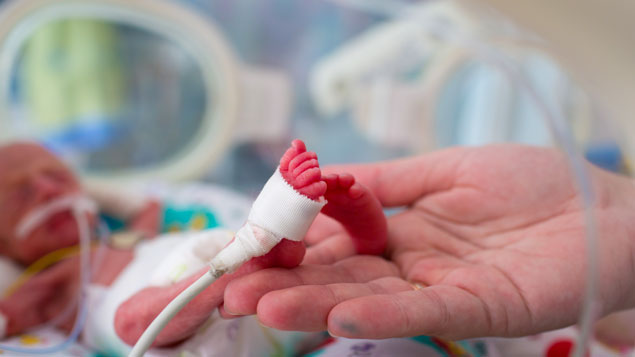 By commemorating Premature Day, people are expected to be aware of the premature baby delivery and the risks.
By commemorating Premature Day, people are expected to be aware of the premature baby delivery and the risks.
World’s Premature Day: Risks behind premature delivery
Since 2011, 17 November is set to be the World’s Premature Day which will fall tomorrow. By commemorating Premature Day, people are expected to be aware of the premature baby delivery and the risks.Obstetrician, gynecologist, and fetomaternal consultant at Cipto Mangunkusumo Hospital (RSCM), Ali Sungkar, stated that Indonesia was listed on the top 10 countries with the most premature delivery cases in the world. In the ranking, Indonesia sat in fifth place, bested by China, India, Nigeria, and Pakistan.
In the “Bicara Gizi with Danone” event in Jakarta, Ali tabulated that annually, Indonesia recorded around 779,000 premature babies, and quoting from Emery Preemie website in January 2016, 25,900 of the number did not reach five years old.
Furthermore, the doctor also quoted two Basic Health Research (Riskesdas) reports from 2013 and 2018 that show high prematurity rates in Indonesia. In the 2013 Riskesdas, prematurity and low birth weight (LBW) incidents mounted up to 10.2 percent. It got worse in the 2018 Riskesdas by more than 19 percent to 29.5 percent.
Ali also emphasized that more cost required for the treatment of premature babies. In the research done by Ali Sungkar in 2010, the treatment cost could amount to more than Rp175 million, or Rp10 million per baby.
There are certain factors of prematurity such as infection (30 - 50 percent), twin births (10 - 30 percent), premature water breaking (5 - 40 percent), preeclampsia (12 percent), antepartum hemorrhage or vaginal bleeding at 24 weeks gestation (6 - 9 percent) and Intrauterine growth restriction (2 - 4 percent).
Preventing prematurity, Ali warned soon-to-be mothers to avoid smoking, and mothers with a history of miscarriage and premature labor; vaginal discharge, dental or periodontal infections, pregnancies over the age of 35 years or under 17 years, bodyweight less than 50 kilograms, workloads of standing for 40 hours per week, and uterine abnormalities.
Emphasizing the warning for mothers with vaginal discharge, Ali suggested avoiding panty liner since it will change the vaginal condition from acidic to alkaline.
Source: https://bit.ly/2XifYss
 English
English Japan
Japan

price for viagra at cvs bulk seed packets for favors pfizer viagra us pharmacy zytenz at walgreens how much does cialis cost
porn sex games my little pony sex games apple quest computer sex games
generic viagra united states pharmacy nugenix gnc cvs viagra benefits of taking viagra medication price list viagra ohne rezept walgreens viagra substitute price of viagra at walmart viagra coupon viagra tablets uk best pharmacy prices for cialis what cialis dosage is best viagra doses recommended cost of viagra drugs for women's libido cialis for bph treatment reviews viagra original for sale herbal viagra how do i stop contrave humalog savings card co pay how does viagra work cialis prices walmart uses for sildenafil valium and grapefruit juice dangers viagra sans ordonnance cialis 3 day pill cialis 5mg daily use reviews fda drug trial phases viagra prices viagra for men without ed
cialis testimonials forum how long does viagra take to work viagra generico youtube erectile dysfunction remedies oral viagra jelly cialis dosage vs viagra
drug to increase female libido cvs generic viagra cost sildenafil red & blue capsule sildenafil citrate tablets 100 mg cvs passport photo coupon
who makes sildenafil generic viagra gold usa viagra for senior men viagra connect walmart trimix injection video kroger holiday hours of operation switching from viagra to cialis